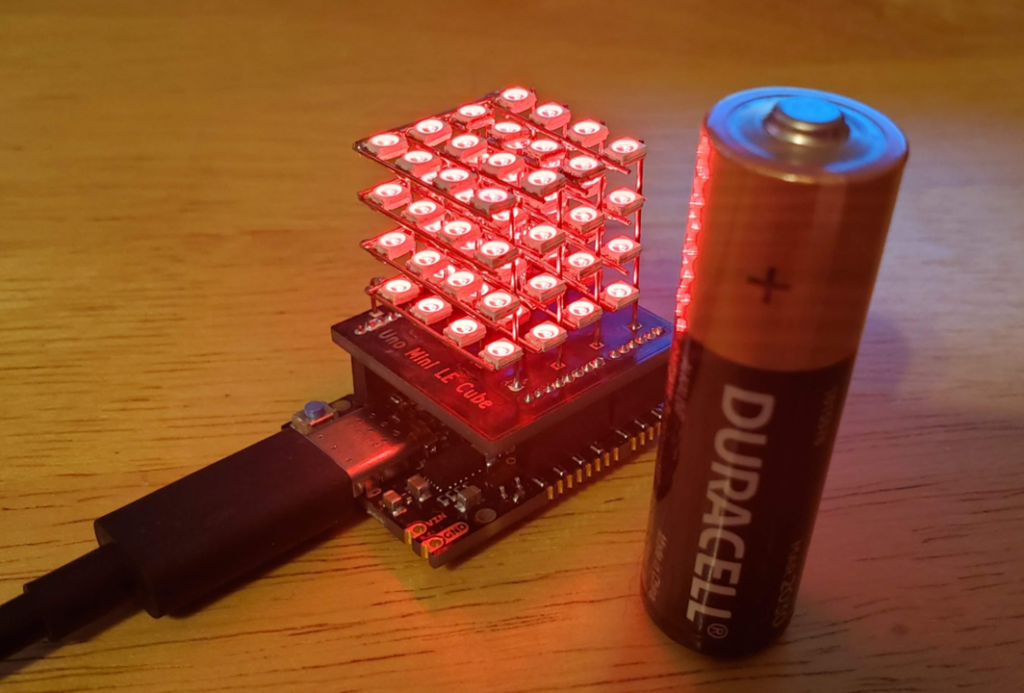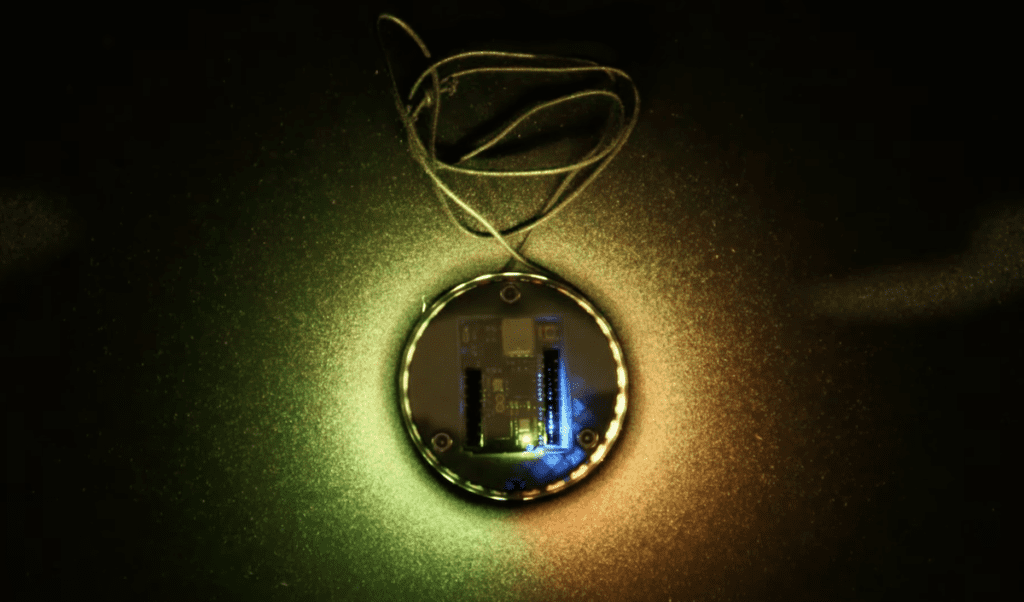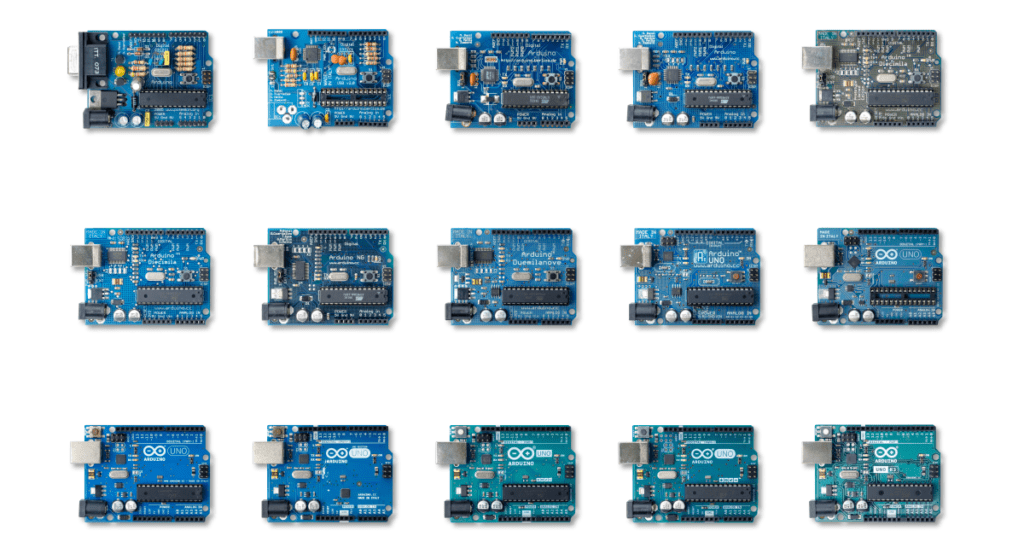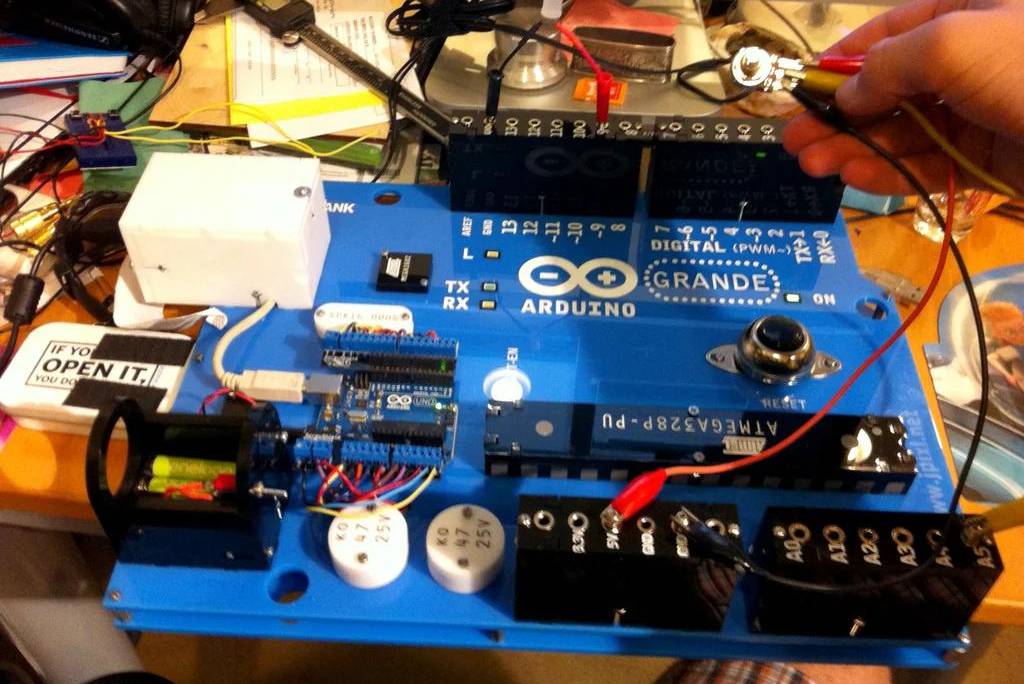Schlagwort: Uno Mini Limited Edition
-

An LED cube circuit sculpture shield for the UNO Mini LE
Reading Time: 2 minutesArduino Team — July 18th, 2022 Few devices are more iconic in the maker community than the Arduino Uno board. To celebrate the Uno’s history and beloved status, we released the UNO Mini Limited Edition in late 2021. This little board is a tiny replica of the standard Uno, but with a…
-

An UNO Mini Limited Edition necklace is a must-have accessory for Arduino lovers!
Reading Time: 2 minutesArduino Team — June 11th, 2022 When Katie Dumont of element14 Presents received her Arduino UNO Mini Limited Edition, she was concerned that it would end up like most of her other pieces of hardware — either stored somewhere safely in its box or on a shelf for display. But because she…
-

One board to rule them all: History of the Arduino UNO
Reading Time: 10 minutesAs familiar as we all are with the UNO, there’s probably a lot you don’t know about the iconic Arduino microcontroller board. Put on your rose-tinted spectacles, and let’s wax poetic about the origins of this beloved maker board. Rise of the Techno-Hippies By 2009, the team that would become Arduino was…
-

Our 12 favorite Arduino UNO projects
Reading Time: 3 minutesThe UNO wasn’t Arduino’s first board, and it won’t be its last. There have been many varieties of microcontroller and maker boards before and after the UNO, but none have been as iconic. As we cross the epic milestone of 10 million UNOs sold and the launch of the UNO Mini Limited…
-

Introducing the Arduino UNO Mini Limited Edition: Pre-orders now open
Reading Time: 3 minutesThe iconic Arduino board is back, in the shape of the UNO Mini Limited Edition. Pre-orders have just gone live, so don’t dawdle if you want to get your hands on this stunning piece of Arduino history. 10 Million Makers Can’t Be Wrong The UNO Mini Limited Edition is here to celebrate…




